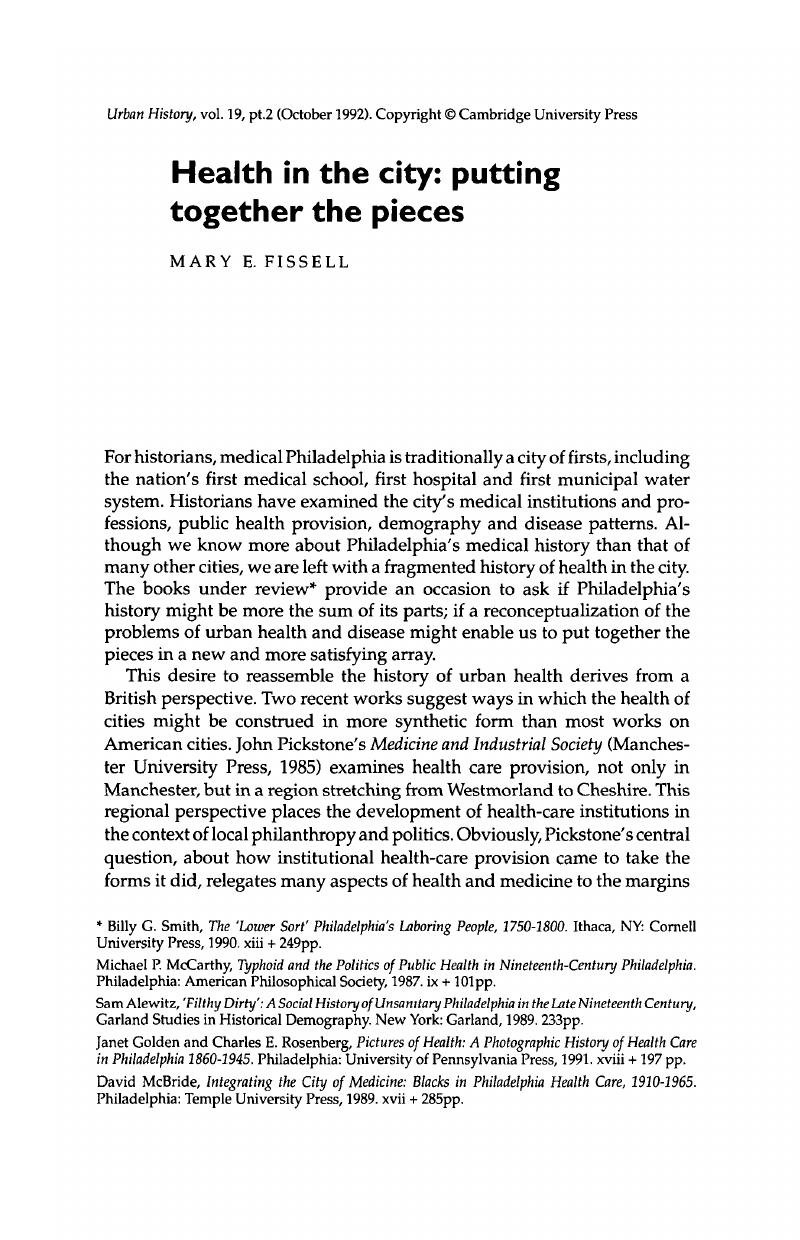Published online by Cambridge University Press: 09 February 2009

* Smith, Billy G., The ‘Lower Sort’ Philadelphia's Laboring People, 1750–1800. Ithaca, NY: Cornell University Press, 1990. xiii + 249 pp.Google Scholar
1 Warner, S.B. Jr, The Private City: Philadelphia in Three Periods of Its Growth (Philadelphia, 1968; rev. ed., 1987)Google Scholar; see Morman, E.T., ‘Clinical pathology in America, 1865–1915: Philadelphia as a test case’, Bulletin of the History of Medicine, 58 (1984), 198–214Google ScholarPubMed; and his ‘Guarding against impurities: the Philadelphia Lazaretto, 1854–1893’, Pennsylvania Magazine of History and Biography, 108 (1984), 131–51.Google Scholar
2 Tomes, N., ‘The private side of public health: sanitary science, domestic hygiene, and the germ theory, 1870–1900’, Bulletin of the History of Medicine, 64 (1990), 509–39.Google ScholarPubMed
3 For patterns of mortality in Philadelphia see Condran, G. and Cheney, R., ‘Mortality trends in Philadelphia: age- and cause-specific death rates 1870–1930’, Demography, 19 (1982), 97–123CrossRefGoogle ScholarPubMed; Condran, G., Williams, H. and Cheney, R., The decline in mortality in Philadelphia from 1870–1930: the role of municipal services', Pennsylvania Magazine of History and Biography, 108 (1984), 153–77.Google Scholar
4 For a study of the nineteenth-century medical profession in Philadelphia, see O'Hara, L.J., An Emerging Profession: Philadelphia Doctors, 1860–1900 (New York, 1989).Google Scholar
5 For example, see Bell, W.J., ‘Medicine in Boston and Philadelphia: comparisons and contrasts’, in Cash, P., Christianson, E.H. and Estes, J.W. (eds), Medicine in Colonial Massachusetts (Boston, 1980), 159–83Google Scholar; Klein, R.S., ‘The men of '68: graduates of America's first medical school’, in Klein, R.S. (ed.), Science and Society in Early America (Philadelphia, 1986), 109–54.Google Scholar